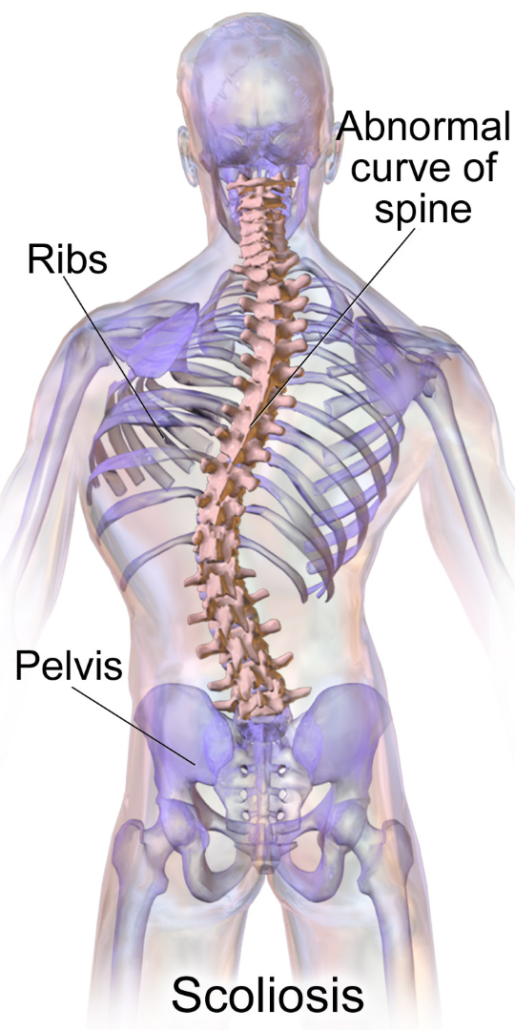The Causes of Lower Back Pain
in Chronic Pain, Conditions, Low Back PainWhat is Lower Back Pain?
About 80% of all adults experience lower-back pain at least a few times in their lifetime. Few other medical problems can boast such a widespread affliction rate across the population. In fact, besides from the common cold, lower-back pain accounts for more missed work days amongst people under the age of 45, than any other condition.
Beyond the numbers and statistics, lower-back pain is a debilitating affliction that can put your life to a screeching halt. Much of the time, those experiencing lower-back pain aren’t even sure what the root of the problem is. Lower-back pain can be the result of a variety or combination of issues.
We wrote this blog to help you better understand what kind of lower-back pain you may be experiencing. These are common lower-back problems that we see everyday at Advantage Healthcare of Charleston. If you think you are experiencing any of these issues, please call us (843-553-2211) to schedule a free consultation. Unchecked lower-back pain can easily develop into long lasting, chronic pain, which is often a sign of deep underlying damage to your nerves, muscles, or spine.
Injuries
To start, let’s look at one the most common causes of lower-back pain: injuries. These can take the form of strains, sprains, and trauma. Strains and sprains are usually a result of overworking or making an improper movement with your lower back. Trauma is a result of an external factor, such as a car accident or a sharp fall, causing injury. Sprains occur from a sudden, forceful movement damaging your ligaments. Ligaments connect and support your bones and joints in the lower back. Sprains affect us from overuse or poor conditioning in the muscles. While usually these occur over a period of overworking one’s muscles, when you are already out of shape, it does not take much for a sprain to cause a muscle tear.
Herniated Discs
The next common lower back injury is a herniated disc. These typically affect people in their 30’s and 40’s. They are often referred to as a “slipped,” “torn,” or “ruptured” disc. These occur when the soft center of a spinal disc squeezes through a crack in the hard exterior. While at times it can come with almost no symptoms, if it agitates a nerve, it can cause an excruciating, cutting pain that can extend down an arm or leg.
Obesity and Posture
This final group of lower-back pain causes can be corrected on our own with just a little bit of self-discipline. Obesity is one of the leading causes of health problems in America today, so it is no surprise that it is also one of the most common causes of lower back pain. Exercise and a proper diet are both proven to not only reduce obesity, but also make lower-back pain easier to avoid and recover from. Other causes include improper posture when standing or sitting for long periods of time. Standing and sitting are second nature. People rarely take a moment to pay attention to how they are carrying themselves. But just a little bit of consciousness when it comes to posture and weight can greatly relieve the lower back.
How we can help you get over Lower-Back Pain
Chiropractic care partnered with physical therapy and medical treatment has proven to be an effective method for recovery from most lower-back conditions. At Advantage Healthcare we have a Medical Doctor, a Doctor of Chiropractic, and a Nurse Practitioner on staff. This enables us to provide specialized care that’s tailored to fit your needs. From trigger point therapy (TPT) to chiropractic adjustments to therapeutic lumbar support braces, we provide our patients with the most modern and proven techniques of curing lower-back pain. All of these treatments come with the support of physical therapy and education on personal health.
Now that you understand the different forms of lower back injuries, you might have an idea of what kind of pain you’ve been dealing with. There are many other causes, such as arthritis, spinal misalignment, and nerve damage, however these require a medical professional to diagnose. If you have been experiencing any lower-back pain, then please give us a call and set up your free consultation today.
Whiplash
in ConditionsWhiplash is most often diagnosed in victims of car accidents but can occur as a result of any sudden force. Some people have reported whiplash as a result of roller coasters and other thrill rides, playing contact sports, and even slip and falls. Unfortunately, most people do not realize they have whiplash when it first occurs as symptoms can take up to 72 hours to manifest.
The severity of whiplash varies and may involve discs, ligaments, joints, muscles and nerves.
Common indicators of whiplash include:
- Neck and/or shoulder pain
- Neck Stiffness
- Dizziness
- Difficulty concentrating
- Sleep disturbances
- Headache
- Blurred vision
- Irritability
- Fatigue
- Ringing of the ears
AHC uses a variety of methods to treat whiplash:
- Chiropractic adjustments
- Deep tissue massage
- Injections (TPI)
- Myofascial release
- Traction
- Ultrasound
- Physical therapy
- Durable Medical Equipment
- Low Level Laser Therapy (LLLT)
The mistake most patients make is not seeking treatment soon enough. We recommend a comprehensive exam for anyone who thinks they could be experiencing whiplash.
Scoliosis
in Conditions Scoliosis, or curvature of the spine, is a common problem that can cause people to experience aches and pains, uneven hips and/or shoulders, difficulty breathing and a variety of other problems. The severity of scoliosis can range from mild to severe. It generally occurs in children during a growth spurt, but can also be caused by birth defects, tumors, infections or injuries to the spine and diseases such as Cerebral Palsy. Some experts suggest a possible hereditary link.
Scoliosis, or curvature of the spine, is a common problem that can cause people to experience aches and pains, uneven hips and/or shoulders, difficulty breathing and a variety of other problems. The severity of scoliosis can range from mild to severe. It generally occurs in children during a growth spurt, but can also be caused by birth defects, tumors, infections or injuries to the spine and diseases such as Cerebral Palsy. Some experts suggest a possible hereditary link.
AHC has a variety of ways to treat scoliosis, including:
- Chiropractic adjustments
- Massage and other muscle relaxing therapies
- Physical therapy
- Braces and durable medical equipment
- Low Level Laser Therapy (LLLT)
Treatment is recommended even when scoliosis is mild to minimize the need for surgery in the future.
Severe cases need monitoring and treatment since scoliosis can cause heart and lung damage.
…..
Image: Blausen.com staff (2014). “Medical gallery of Blausen Medical 2014”. WikiJournal of Medicine 1 (2). DOI:10.15347/wjm/2014.010. ISSN 2002-4436.
Peripheral Neuropathy
in ConditionsPeripheral neuropathy is a condition that can originate from anywhere in the nervous system and affects the hands and/or feet. Peripheral neuropathy is often associated with weakness, numbness, burning, tingling or pain. Patients sometimes refer to it feeling like ‘pins-and-needles’.
Neuropathy symptoms depend on the type of nerves being affected.
- Sensory nerves: sense sensations such as pain, vibration, temperature and touch
- Motor nerves: control the movement of muscles
- Autonomic nerves: control functions within the body such as heart rate, bladder, digestion and blood pressure.
While the exact cause of peripheral neuropathy is unknown, there are some known factors, including:
- Autoimmune diseases
- Diabetes
- Exposure to toxins
- Medications
- Infections
- Inherited disorders
- Trauma
- Pressure on nerves
Common symptoms of peripheral neuropathy include:
- Burning and tingling
- Pain in hands, feet, back, face or thighs
- Pain more severe at night
- Cramping
- Difficulty walking
- Muscle weakness
- Loss of muscle
- Lack of coordination
- Pins-and-Needle sensation
- Reduced sensation of touch
- Poor balance
- Slow reflexes
- Oversensitivity
AHC works with clients to determine the type then develops a customized treatment plan.
Treatment options include:
Obesity
in ConditionsObesity related conditions include heart disease, stroke, type 2 diabetes, and certain types of cancer – some of the leading causes of preventable death. More than 1/3 (36.5%) of adults have obesity. (cdc.gov) Weight related health problems can be remedied when the body returns to a healthy BMI, which for most people is 18.5 – 24.9.
When a patient seeks assistance with weight loss and management, AHC measures BMI then discusses treatment options. We work with patients on diet and exercise programs while addressing any pain they may be experiencing.
All of our weight loss programs include an initial exam, diet plan, exercise plan, counseling, and weekly weigh-ins. A summary of our weight loss programs include:
- Phentermine – an FDA approved appetite suppressant designed to boost energy and curb appetite.
- Supplement with Vitamin B12 – proven to be successful in weight loss when combined with a diet and exercise plan.
Numbness & Tingling
in ConditionsNumbness and tingling anywhere in the body is unsettling. Many people don’t seek treatment because they feel there is either nothing that can be done, or, they will be faced with surgery. AHC takes a non-surgical approach to numbness and tingling and we have seen excellent results.
We first evaluate a patient’s symptoms to learn the root cause, then develop a treatment plan designed to provide maximum relief. This may include:
- Chiropractic care
- Electrical nerve stimulation
- Ultrasound
- Dietary and exercise plan
- Physical therapy
Pinched Nerve
A compressed, or pinched, nerve can occur anywhere in the joints, limbs or hips. The symptoms can range from sharp, stabbing and radiating to complete numbness. Pinched nerves are often confused with other health problems, which is why getting an evaluation is so important. Symptoms of a pinched nerve include:
- Shooting pain
- Numbness and tingling
- Weakness
- Loss of coordination and/or reflexes
We first identify the pinched nerve then treat it with chiropractic care, massage, Low Level Laser Therapy (LLLT) and physical therapy.
Advantage Healthcare of Charleston
843-553-2211
122 S. Goose Creek Blvd., Suite B
Goose Creek, SC 29445
Map & Hours
Advantage Healthcare of Summerville
843-771-2024
2039 N. Main Street
Summerville, SC 29483
Map & Hours
Ask a Question
Email: info@ahcwellnesscenter.com
Follow us on Facebook
Recent Posts
 Advantage Healthcare Receives 2023 Best of Goose Creek AwardDecember 7, 2023 - 5:10 am
Advantage Healthcare Receives 2023 Best of Goose Creek AwardDecember 7, 2023 - 5:10 am Common benefits of receiving chiropractic careOctober 7, 2020 - 4:49 pm
Common benefits of receiving chiropractic careOctober 7, 2020 - 4:49 pm

